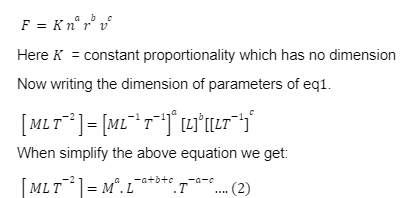Stokes Law is a mathematical formula that represents the drag force that prevents tiny spherical particles from falling through a fluid medium. Clouds have a huge amount of water in them. Clouds are made up of microscopic water droplets that descend slowly. The drag force of the air, on the other hand, outweighs the gravitational force for microscopic particles. The drag force increases as the size of an object grows. Sir George G. Stokes, a British scientist, developed Stokes Law in 1851. He considered the forces operating on a specific particle as it sinks through a liquid column under gravity’s influence.
Stokes law
When a body is put into a fluid, the viscous forces acting on it are described by Stokes law. Because of the viscous forces, a body falling through a liquid falls slowly or, to put it another way, its velocity does not increase. As a spherical body decelerates due to its weight, its velocity increases, but it cannot exceed a maximum value defined as the terminal velocity.
When a body descends through a fluid, the layer of fluid in touch with it is dragged. The body is subjected to a retarding force as a result of the relative motion that develops between the different layers of the fluid. The sphere’s velocity, radius, and fluid viscosity are all directly related to the retarding force acting on it as it moves through a viscous fluid. This is known as Stokes’ law.
A person falling with a parachute, pouring rains, and swinging a pendulum bob are all instances of such motions. The viscous force is related to the object’s velocity and is directed in the reverse direction of motion.
Stokes Law Formula
Stokes conducted a number of experiments to better understand the motion of small spherical things in various fluids, and he came to the conclusion that the viscous force F acting on a spherical body of radius r is directly proportional to the quantity. The formula of stokes law are as follows:
F=6π rnv
Here F is the drag force
r is the radius of sphere
And v is the velocity of the sphere
And n is the viscosity
Stokes Formula Derivation
A friction force must be resisted when a sphere or a body passes through a fluid. The Stokes Law, named after scientist George Gabriel Stokes, quantifies the frictional force exerted between a liquid and a spherical body falling through it based on radius and velocity. This can be expressed as a mathematical expression:
F ∝na rb vc…(1)
Here F is the drag force
r is the radius of sphere
And v is the velocity of the sphere
And n is the viscosity and a , b, c are some unknown quantity
Now substituting the value:

When simplify the above equation we get:
ML T-2 =Ma.L-a+b+c.T-a-c….(2)
Mass, length, and time are all separate entities in classical mechanics.
We get by equating the superscripts of mass, length, and time from equation (2).
a=1 ..3
-a+b+c=1..(4)
-a-c=2 or a+c=2..(5)
By substituting the eq 3in (5). We get
1+c=2
c=1..(6)
Now substituting the value of 36in (4) we get:
-1+b+1=1
b=1…(7)
Now substituting the value of eq3,6and 7in (1) we get the final equation :
F=Kπ rnv
Here value of K=6 π
When putting the value of K In above equation we get:
F=6π rnv This is a required final equation.
Darcy’s law derivation from navier stokes
Using a formal averaging approach, Darcy’s law for anisotropic porous media is obtained from the Navier-Stokes equation. The evidence that the permeability tensor is symmetric is given special attention. Furthermore, it is demonstrated that the local and macroscopic velocity fields have a one-to-one relationship. As a result, the local velocity vector at any given position must always lie on a fixed line or in a fixed plane, which is an interesting phenomenological discovery.
All of this holds true under isothermal and steady state circumstances for an incompressible homogeneous Newtonian fluid travelling slowly through a stiff porous material with uniform porosity. Darcy’s law is further debated in terms of whether it applies to nonsteady or compressible flow situations, as well as when the medium has non uniform porosity. Finally, it is demonstrated that the Hagen-Poiseuille equation, as well as the expression representing Couette flow between parallel plates, can be deduced from the equations presented in this paper, and that they can thus be considered special examples of Darcy’s law.
In the lack of gravitational forces and in a homogeneously permeable medium, Darcy’s law is provided by a simple proportionality relationship between the instantaneous fluxq=QA unit of Q ism3s and unit of A is m2)through a porous medium, the permeability k of the medium, the dynamic viscosity of the fluid and the pressure drop ∆ p over a distance L in the form
q=- kμL ∆P
The defining equation for pore space is this equation for single phase.
conclusion
Stokes Law is a mathematical formula that represents the drag force that prevents tiny spherical particles from falling through a fluid medium. Sir George G. Stokes, a British scientist, developed Stokes Law in 1851. When a body is put into a fluid, the viscous forces acting on it are described by Stokes law. The viscous force is related to the object’s velocity and is directed in the reverse direction of motion. A friction force must be resisted when a sphere or a body passes through a fluid. The formula of stokes law are as follows: F=6π rnv.
 Profile
Profile Settings
Settings Refer your friends
Refer your friends Sign out
Sign out






